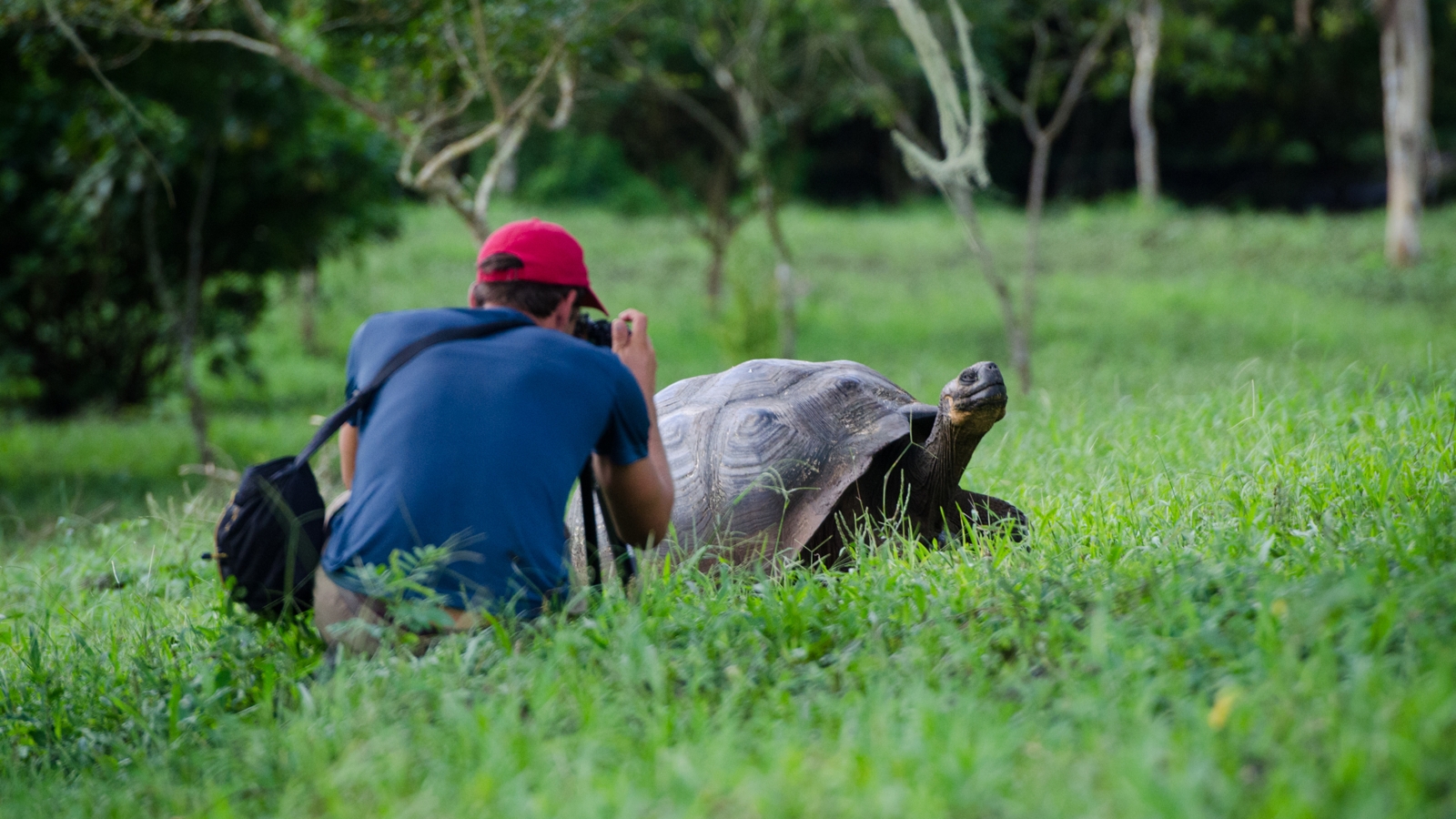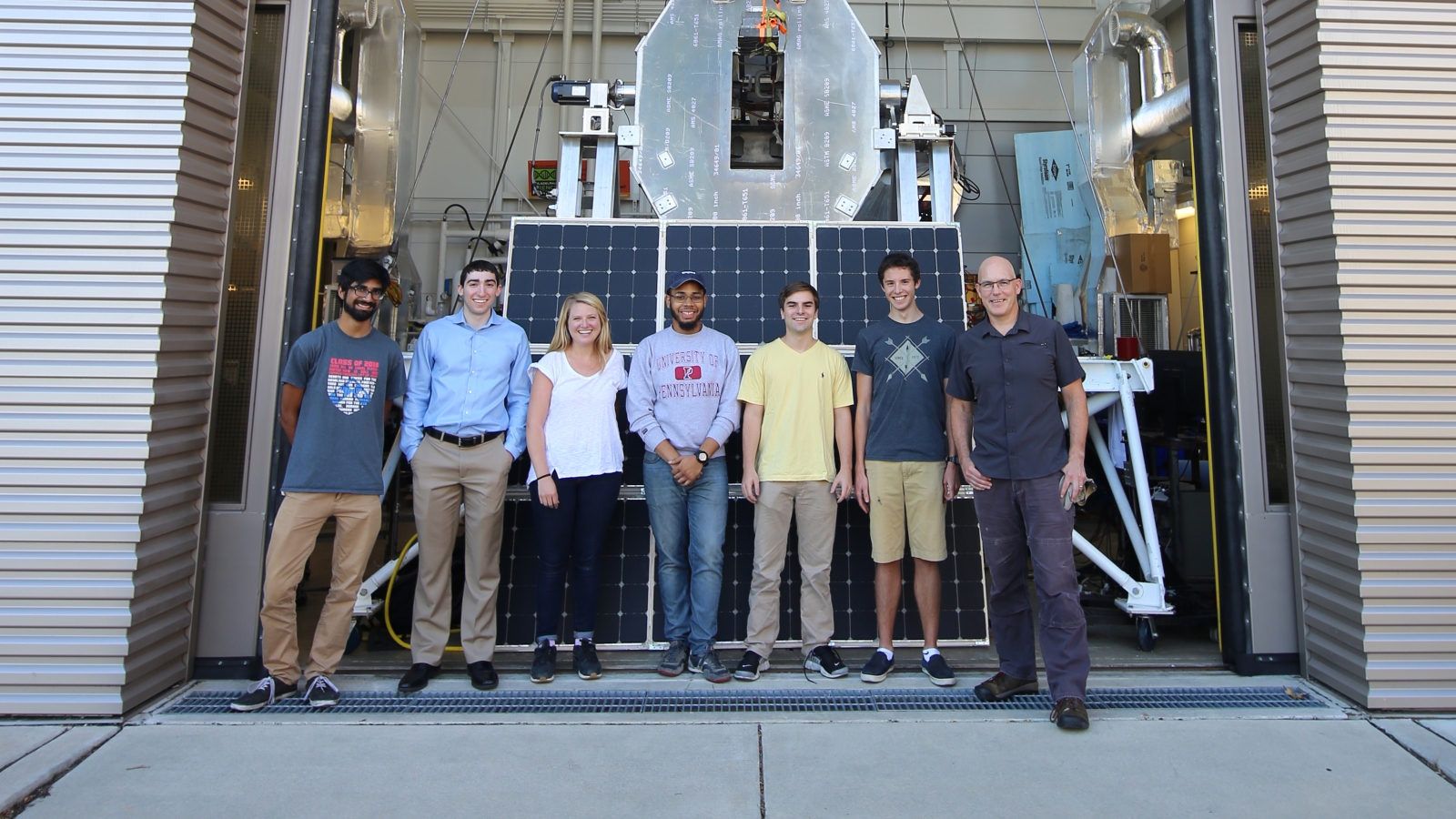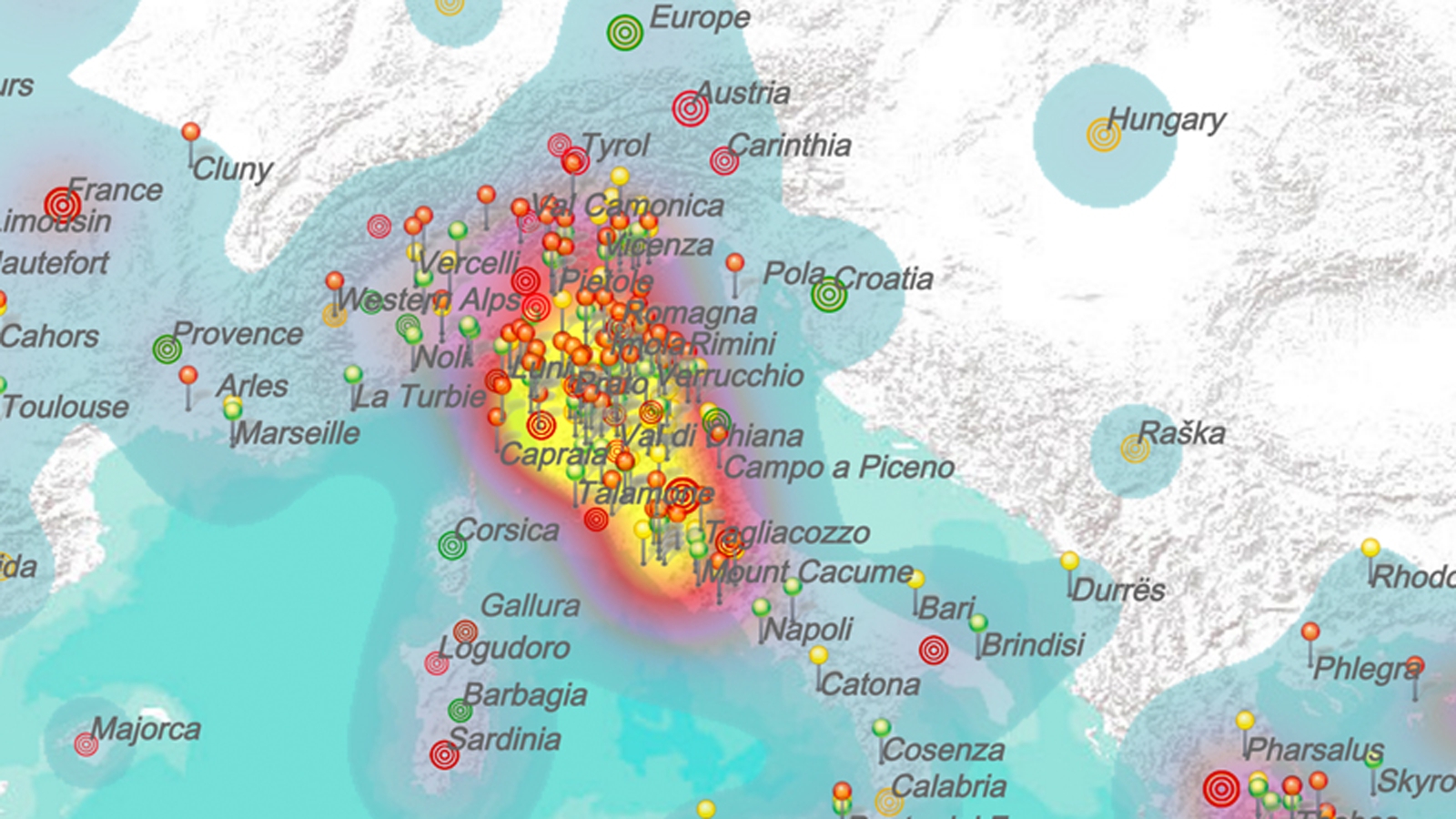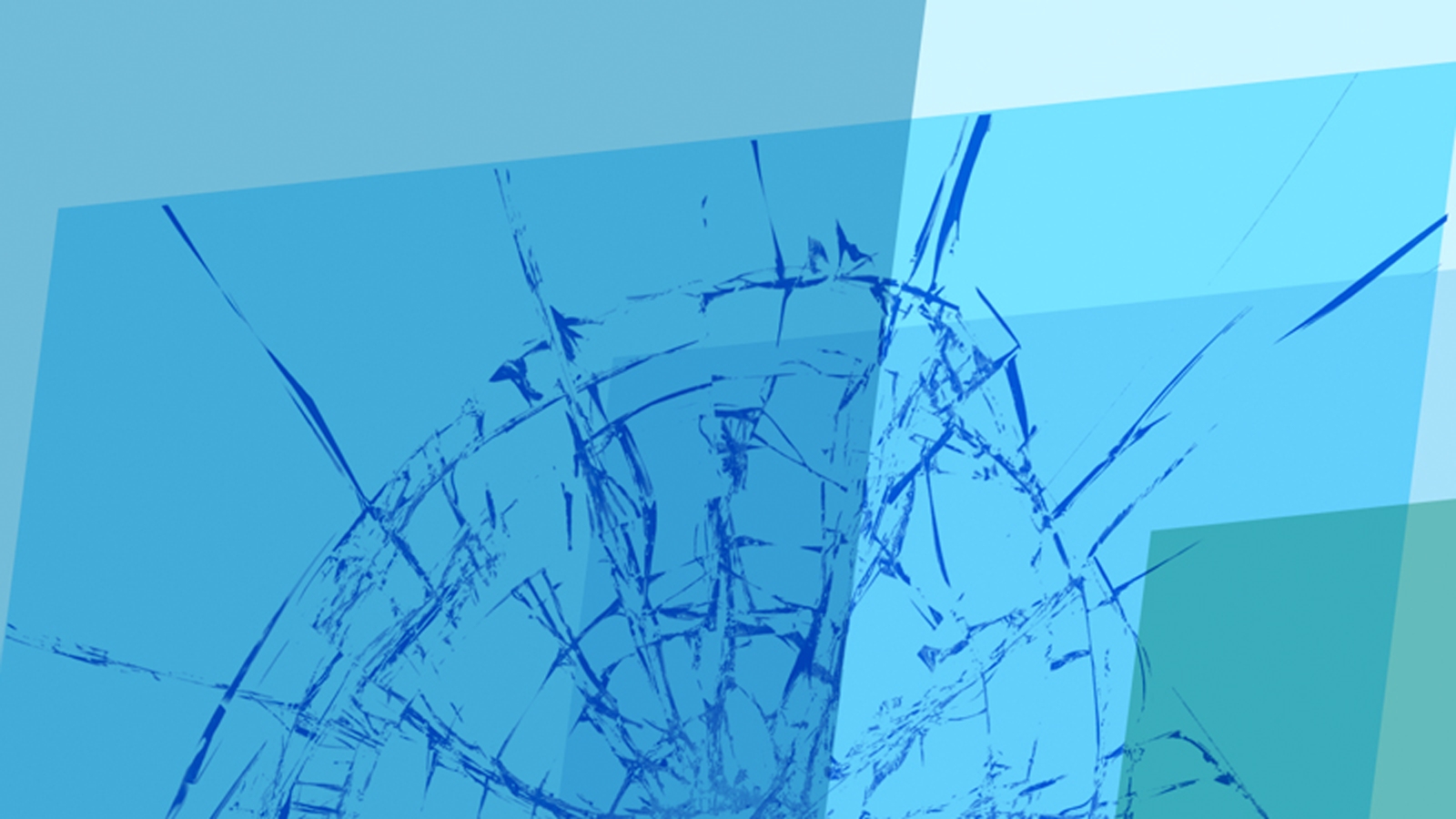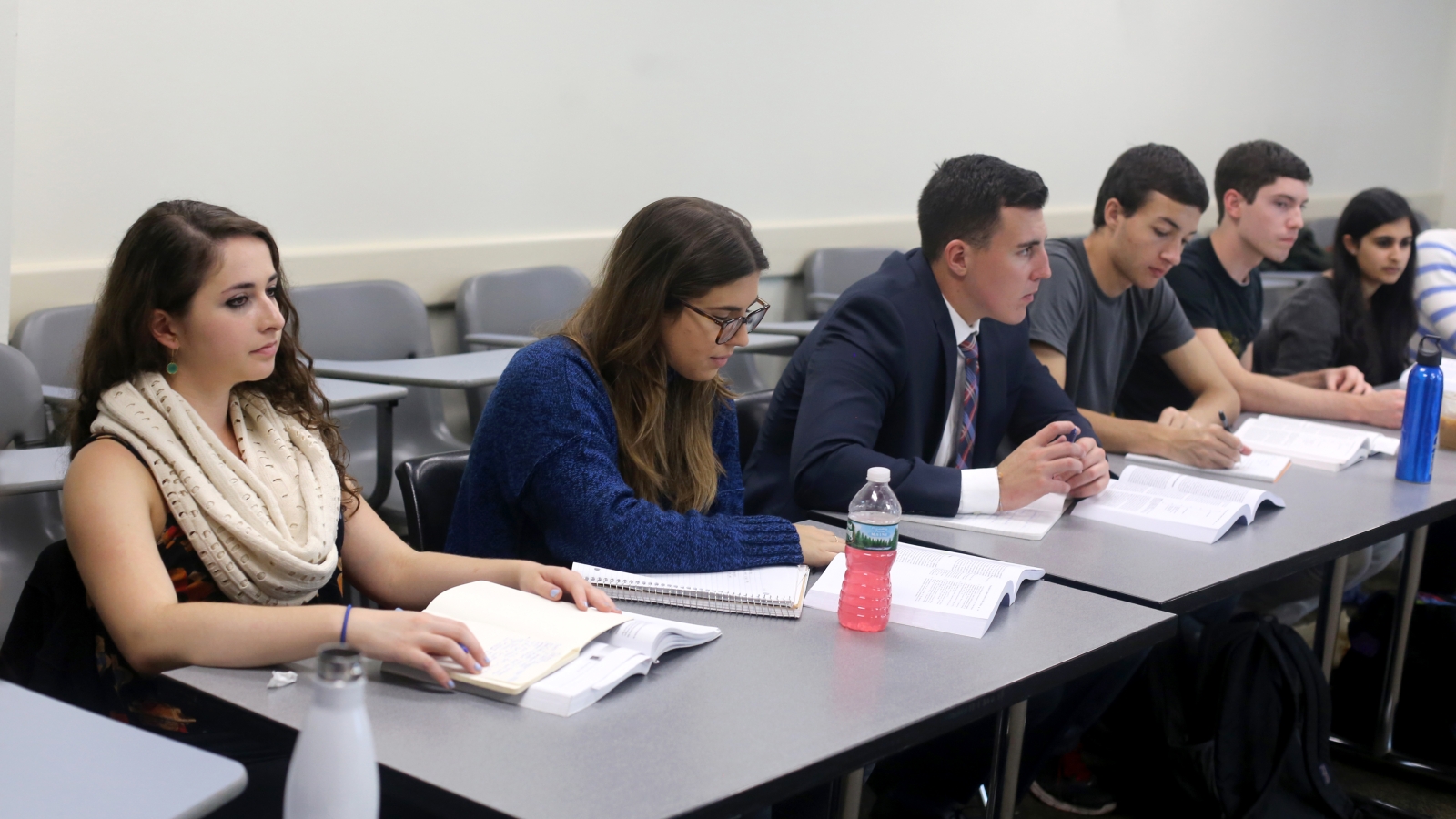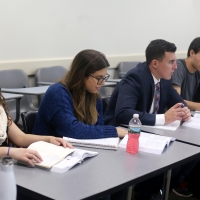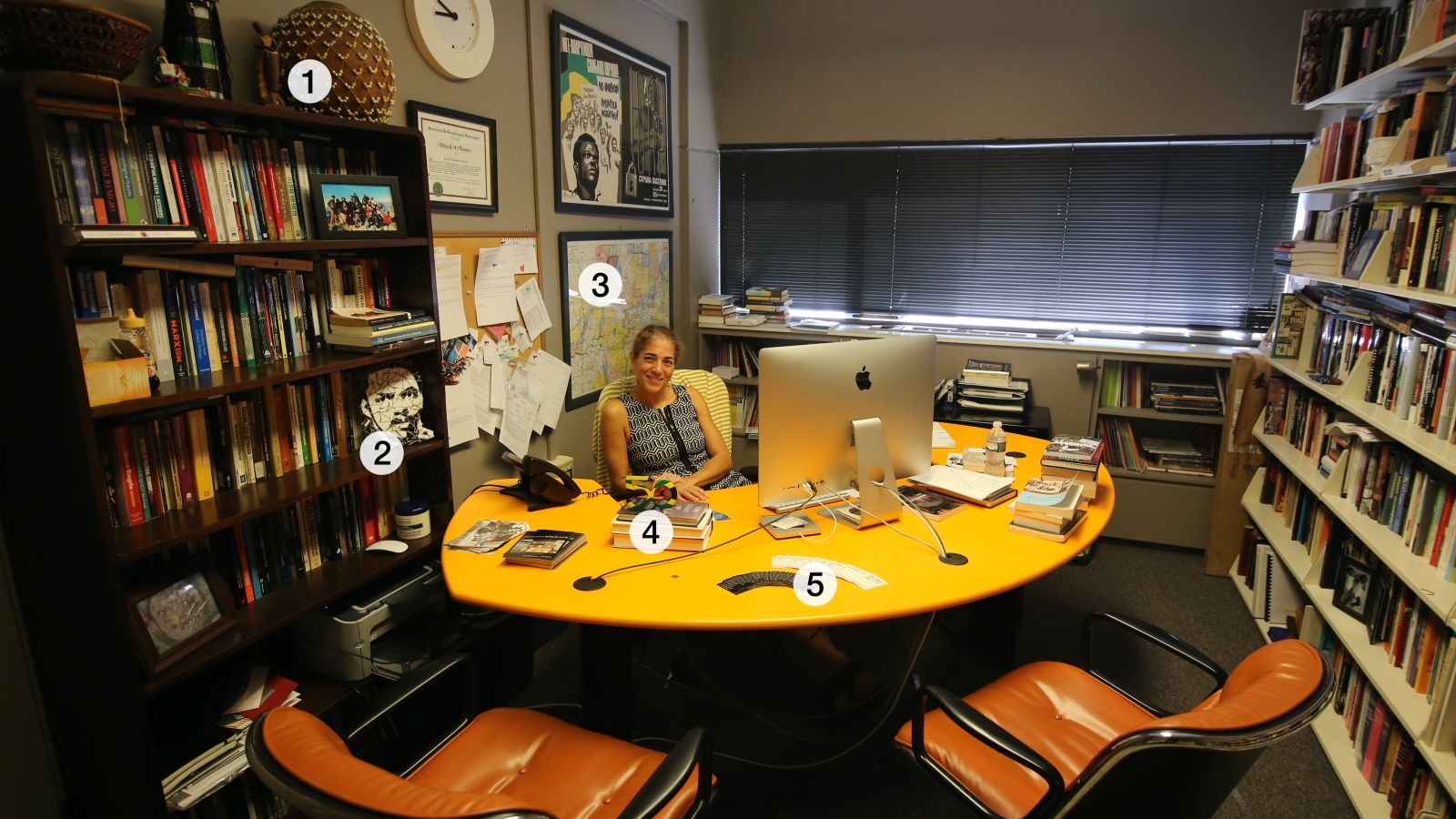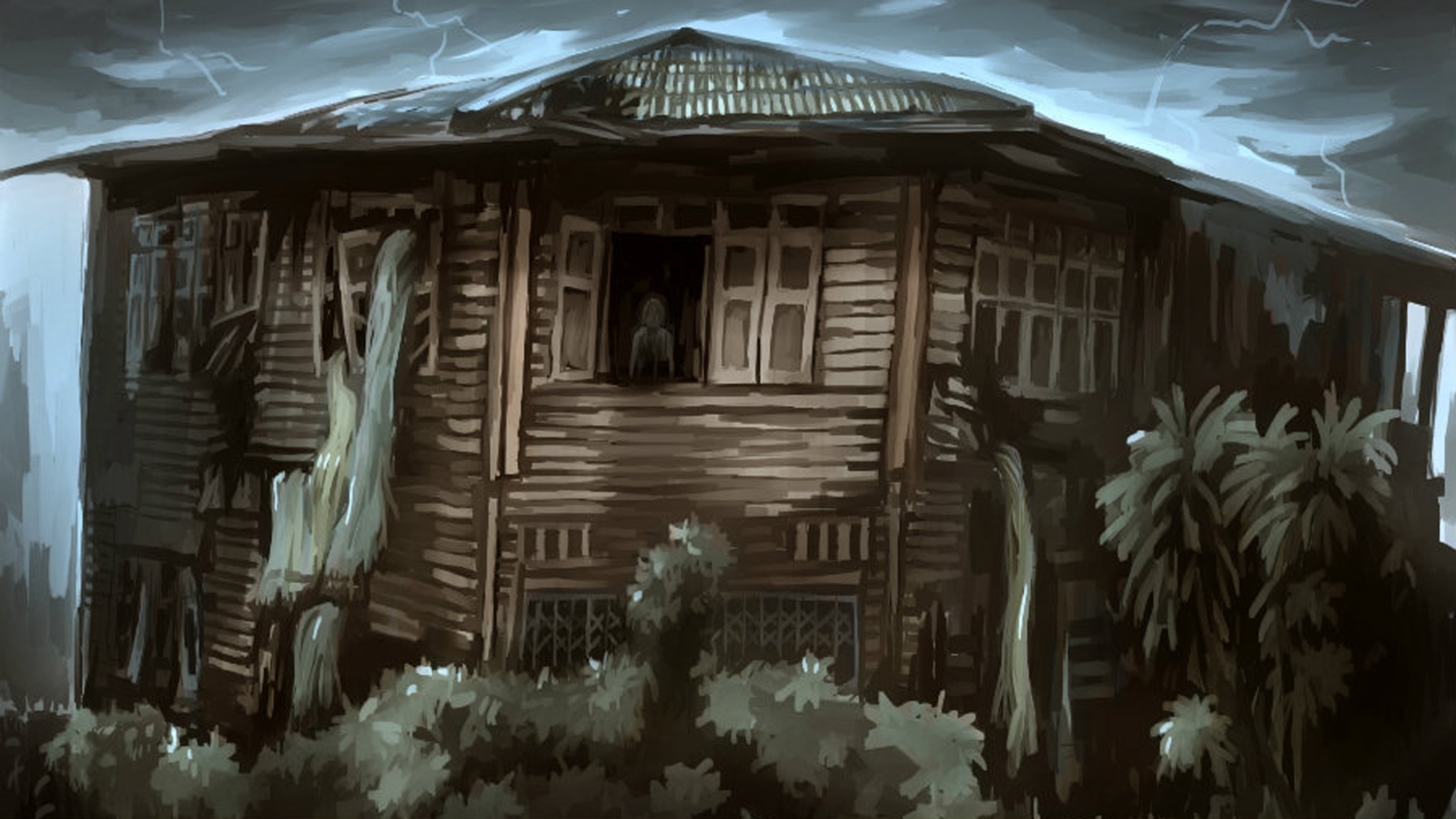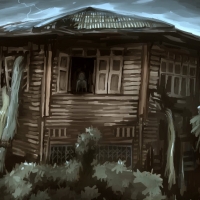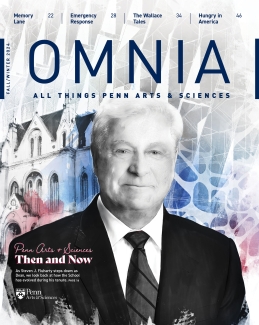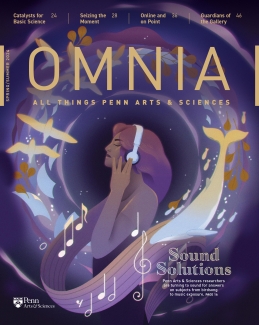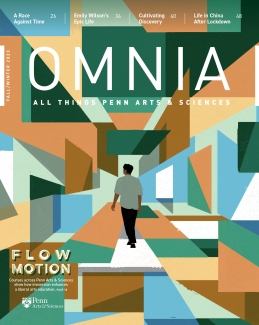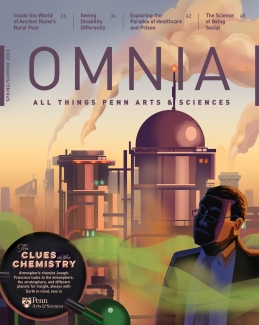In this issue, Richard Berk uses big data to foresee the future, Arts and Sciences faculty discuss the fact, fiction, and future of artificial intelligence, and physicist Mark Devlin and his team of students harness cutting-edge technology to comb through the evolutionary history of the universe.

Features
-
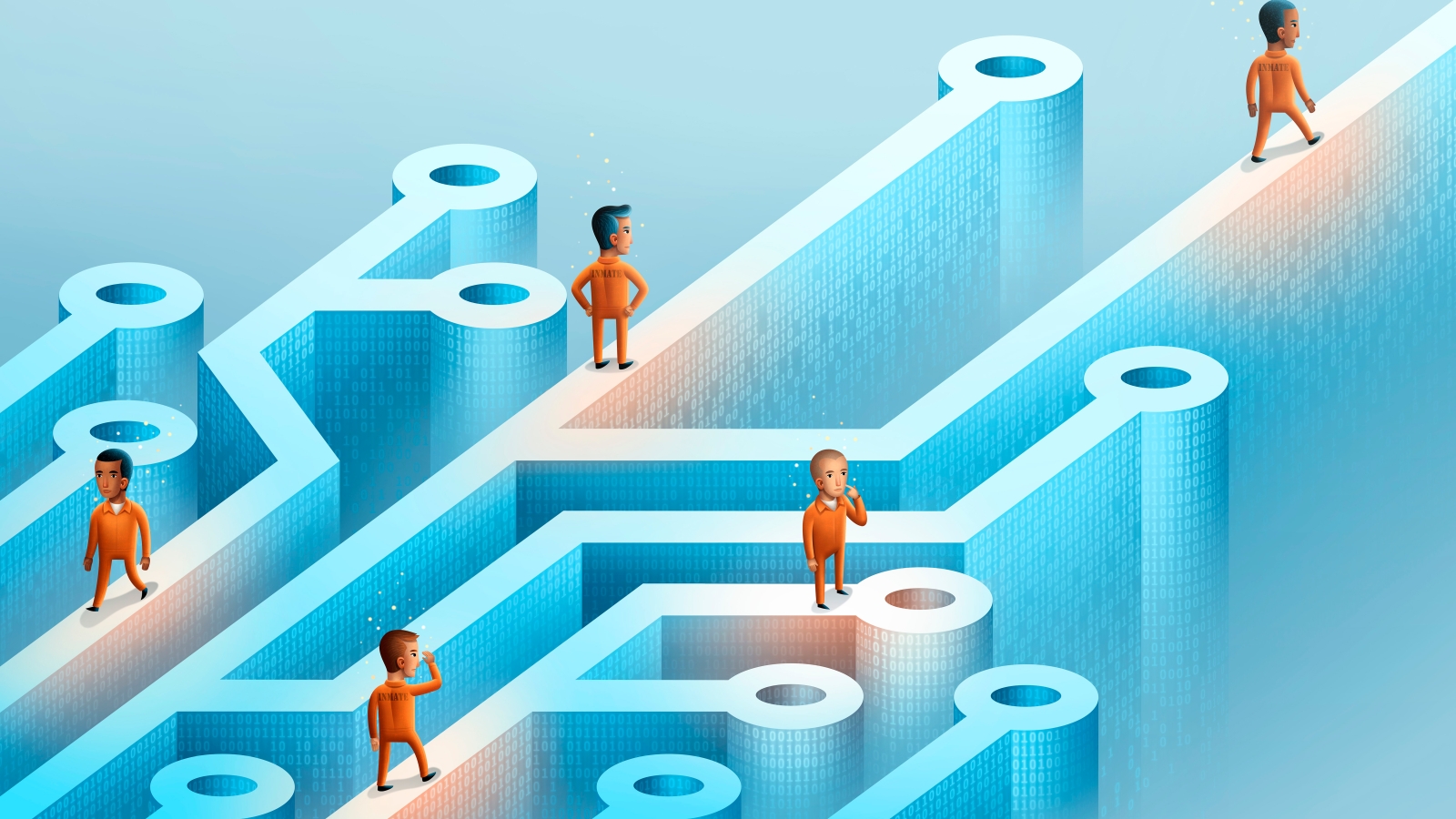
The Data Oracle
Richard Berk uses big data to foresee the future.
When Should We Expect the Robot Army?
Arts and Sciences faculty on the fact, fiction, and future of artificial intelligence.
Liftoff (Video)
Physicist Mark Devlin and his team of students harness cutting-edge technology to comb through the evolutionary history of the universe.
Mapping the Divine Comedy
A digital humanities study in Dante's geographical imagination.
Researchers Shatter Our Idea of Glass
Over three millennia ago, perhaps inspired by the aftermath of volcanic eruptions, humans first began to liquefy sand in an inferno, sculpt it into a vessel, and cool it into glass. All these years later, glass remains somewhat mysterious. Hovering between states, glass may appear to be solid, but the science behind glass reveals it is anything but.
Movers & Quakers
In the Classroom
Voter Motivations
Political Psychology course encourages students to challenge easy explanations.
Insomnia
Office Artifacts: Deborah A. Thomas
Discover the stories behind the professor of anthropology's favorite office items.
Three Questions: The Haunting Hour
Justin McDaniel, professor and chair of religious studies and the coordinator of the Penn Ghost Project, weighs in on the cultural importance of ghosts.

Dean's Message
Editor's Note
School News
New Faculty at Penn Arts & Sciences
PPEH Continues to Grow
Historian and Activist Mary Frances Berry Honored
Environmental Studies Masters at 20
A Public Classroom to Discuss Science and Race
Center for Africana Studies Pre-Freshmen Program Celebrates 30th Anniversary
Opening a Door to Graduate Education
Freshmen Explore Local Arts and Culture
